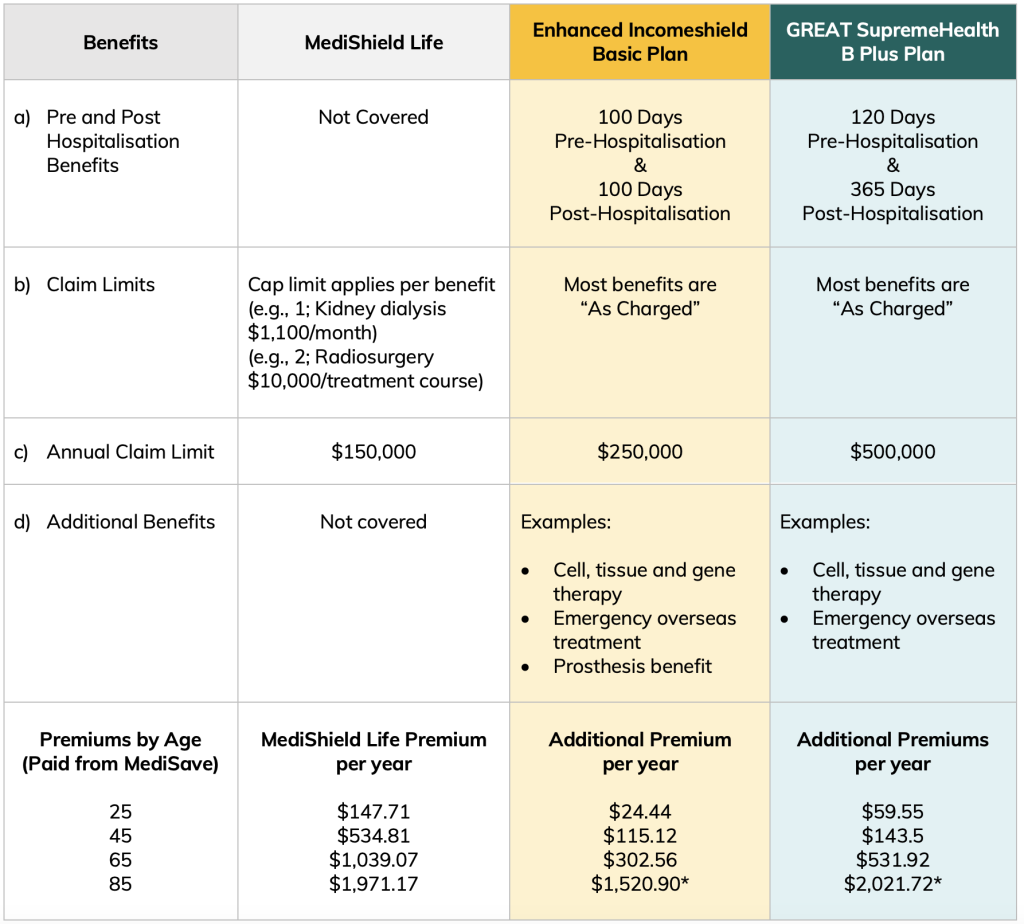Note: It was announced in November 2023 that MoneyOwl will be acquired by Temasek Trust to serve communities under a re-purposed model, and will move away from direct sale of financial products. The article is retained with original information relevant as at the date of the article only, and any mention of products or promotions is retained for reference purposes only.
______________
- MediShield Life allows all Singaporeans and PRs to get top-notch healthcare at subsidised B2/C wards.
- To keep it affordable for everyone, MediShield Life does not cover some things, and caps the reimbursement for different categories of expenses.
- Purchase an affordable Integrated Shield Plan (IP) using MediSave with minimal or no cash outlay to cover what MediShield Life does not, and to “lock in” your insurability while you’re young and healthy.
Hefty hospital bills from getting sick or injured are a top risk to our finances.
Thankfully, Singapore’s government/restructured hospitals offer world-class healthcare even at the subsidised B2 and C class wards. Plus, all Singapore Citizens and Permanent Residents are covered by MediShield Life, which will take care of the bulk of one’s B2/C hospital bills. In fact, 70% of hospitalisations in Singapore are in subsidised B2/C public hospital wards.[1]
What MediShield Life Doesn’t Cover
However, to keep premiums affordable, there are some limits to MediShield Life coverage.
The two key areas are:
(1) Pre and post-hospitalisation treatment. If you need to do a knee replacement, pre-hospitalisation costs could include diagnostic scans and consultations with the surgeon. Post-hospitalisation bills would likely include extended expenses for rehabilitation, physiotherapy and follow-up specialist consultations. While a subsidised B2/C patient will enjoy subsidised rates for these treatments, they would have to be paid out of pocket as MediShield Life doesn’t cover them.
(2) Costs that exceed category claim caps. For example, if there is a complicated surgery that is more expensive than the cap for that type of surgery specified by MediShield Life, the amount in excess of the cap will not be reimbursed. For chronic outpatient treatment like kidney dialysis, you might not be eligible to choose subsidised treatment because of household income means testing, and private dialysis would likely exceed the Medishield Life cap.
These are expenses which can only covered by an Integrated Shield Plan, or IP: a two-layered plan includes an additional private insurance coverage on top of the base MediShield Life.
Affordable Premiums Covered by MediSave
The cheapest way to cover these additional areas is the B1 “as charged” IP, offered by seven insurers. Unfortunately, there is no more B2/C “as charged” IP. But premiums for a B1 IP aren’t too expensive and can be fully covered by MediSave for most ages. See some examples below:

*Premiums exceed the Additional Withdrawal Limit (AWL) from Medisave and will need to be partly paid in cash. The AWL according to the age groups are: 1-40 years old – $300, 41-70 years old – $600, 71 years old and above – $900.
A strategy for subsidised treatments: just with better peace of mind and optionality
Given the quality of care at B2/C wards, it is sensible, especially if you don’t have a lot of spare cash and/or a long-term chronic condition, to choose to be admitted and treated as a subsidised patient. [2]
However, if you still worry about out-of-pocket costs, such as pre-and post-hospitalisation expenses, and bigger expenses for certain surgeries that may exceed a pre-set cap, you can consider the strategy of purchasing an affordable B1 IP plan.
Having the B1 plan does not mean that you have to go to a B1 non-subsidised four-bedder ward. You still retain the option to be a subsidised B2/C patient to enjoy all subsequent consultations at a subsidised rate.
The other advantage of this strategy is that it locks in your insurability, to switch up to the B1 option in future. While MediShield Life covers all Singapore Citizens and Permanent Residents, including those with pre-existing conditions, this is not the case for the private insurance coverage component in IPs. The advantage of getting an IP early is that you can continue to have this coverage regardless of what medical conditions may develop later on in life (as long as you pay the premium on time!)
Conclusion
When it comes to insurance, it’s always about balancing cost with coverage and insurability. You don’t want to overpay for what you really don’t need and can’t afford, but neither do you want to under-protect. Buying a cheap B1 IP to “zhng” your MediShield Life coverage is one possible strategy – the extra premium you pay is for additional peace of mind about out-of-pocket expenses, future insurability, as well as optionality.
The big caveat to this is that you must be able to afford it – you should be contributing regularly to your MediSave on top of having a good amount in your MediSave. As always, regular CPF contributions are the foundation of a Singaporean’s financial plan: be it for medical bills, housing or retirement income.
Disclaimer
The information contained herein does not have any regard to the specific investment objective(s), financial situation or particular needs of any individual. Buying insurance is a long-term commitment and should be based on your unique needs and the suitability of the products. It is advisable to seek advice from a financial adviser to assess your needs and guide you on the features and details of the products before making any financial decisions. The coverage, benefits, premiums, and terms of insurance policies may vary depending on individual circumstances and insurance providers. Individuals are encouraged to review their own insurance needs and policies and seek advice tailored to their specific situation. While every reasonable care is taken to ensure the accuracy of the information provided, no responsibility can be accepted for any loss or inconvenience caused by any error or omission.
[1] CPF Board: https://www.cpf.gov.sg/member/infohub/reports-and-statistics/cpf-trends/healthcare-financing
[2] Subject to means testing, which is a method to calculate the subsidies you will receive from the government when you use care services. It ensures that patients from lower-income households receive more subsidies than those from higher-income households.





